An avid runner, Emmanuel Tapie is a graduate student at the National University of Singapore as well as the new Inter Varsity Polytechnic (IVP) record holder for the 10,000m event – which he had completed in 32 minutes and 42 seconds.
The previous IVP 10,000m record holder had been Soh Rui Yong, with a timing of 32 minutes and 58 seconds in 2013.
Throughout his time in Singapore, Emmanuel, who is originally from Paris, France, had been guided by Coach Steven Quek, who is one of the top running coaches in Singapore.
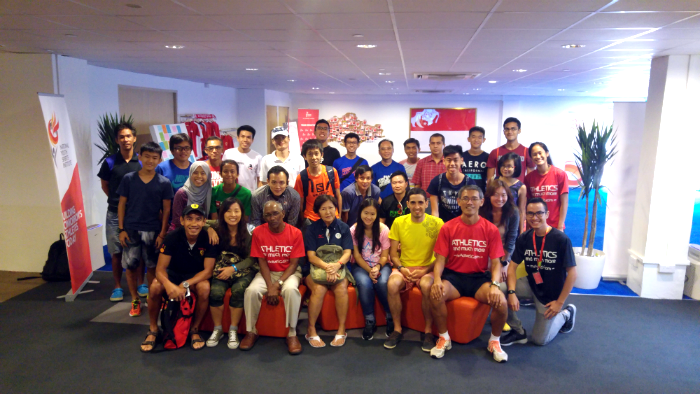
Coach Quek (first row, 2nd from right) and Emmanuel Tapie (first row, 3rd from right) with other guests and runners at the session.
Pointers for runners
In a recent clinic that StanChart Marathon Singapore had held in conjunction with Sport Singapore, Coach Quek had shared some pointers with runners, on how he had helped Emmanuel to break the 10,000m IVP record.
In Emmanuel’s case, he had completed three hard training sessions per week during his on-season competition period. These had comprised of hard 5,000m intervals on Mondays, 10,000m intervals on Thursdays and a 20km long run at MacRitchie Reservoir on Saturdays. On Tuesdays Emmanuel would do a 40 – 60 minute easy recovery run.
Rest is important
Said Coach Quek, “As the body needs to recover, it is not possible to train hard for three days a week, so we can only do two hard days and one moderate day.”
This means that rest is very important to the coach. Coach Quek added, “Emmanuel always makes sure that he recovers well after each training. Though it is normal to feel tired after a session, recovery is taking place and when we recover, we will recover beyond our initial fitness level and reach a new fitness level. That is called SuperCompensation and it is how we improve in running. Keep doing this over a period of time and you will get stronger and fitter.”
Areas of Sports Performance
In terms of sports performance, there are several main areas of training that Coach Quek highlighted. These are as follows.
- Physical Training – To train the speed, strength and endurance that a long distance runner needs to complete his or her race
- Technical Training – Just like how we need to know how to shoot the ball in order to play a basketball game, we have to know the technique of how to run economically. In Coach Quek’s eyes, an economic running technique equates to having a string core so that the body does not collapse halfway during a long race.
- Mental Training – To train how stay focused and concentrate throughout a race when the going gets tough.
- Tactical preparation – The race tactic that you plan to use. For example, are you going to follow the leading pack and out-kick everyone at the end, like marathon runner Soh Rui Yong did at the 2015 South East Asia Games Marathon when he won the gold? Or are you going to run so hard at the beginning that you will lose your competitors very early on in the race?
- Breathing and Relaxation Training – This includes breathing and relaxation techniques so that athletes will not be stressed before the big race.
Emmanuel’s training schedule
Coach Quek also gave runners at the session a look at what Emmanuel’s interval sessions typically comprise of.
They first consist of doing goal setting, that is, the race pace that the runner is targeting to run at. For Emmanuel’s case, his 5,000m target race pace progressively got faster, from 80s per 400m lap on the running track in his first year, to 72s per 400m lap of the running track in his final year of studies.
Once the target race pace had been determined, the training sessions then increase progressively in terms of intensity.
For example, in Emmanuel’s case, the first training session comprised of 12 laps of the 400m running track at the goal pace, with a 60s rest in between each lap.
If Emmanuel had successfully been able to achieve this, then the session would get harder. His second session would comprise of 10 laps of 500m at the same pace with the same amount of rest time, 60s, in between.
The final training session would comprise of two laps of 2,400m at the same goal pace, again with 60s of rest time in between. So as you can see, the intensity gradually increases each week.
Added Coach Quek, “There are many ways to approach training but this is how we approach our race pace training.”
He added, “The rest time is standardised to 60 seconds; that’s because if we change too many variables, for example, varying the rest time to 70 seconds or 90 seconds, it changes too many variables so that is not a direct measure of progress. If pace and rest time is fixed then we are only changing the distance.”
For Emmanuel, this on-season phase would typically kick in, about 12 weeks before Emmanuel’s major competitions.
Marathon runners would differ slightly
Coach Quek points out though, that in terms of marathon runners, the structure of training regime would be similar but with slight changes in terms of the length of the sessions.
He says, “Marathon runners would have more easy jogs in between their sessions, their long runs would of course be longer than 20km and the intervals would also be longer; for example to be able to hold the pace for 5,000m rather than 400m. We would typically target 70 – 80km per week for marathoners.”
Non-competition phase training
However, during his non competition phase though, Emmanuel would do slope training at places such as the Botanic Gardens, near MOE Co Curricular Activities Branch (CCAB) area at Evans Road or the Singapore Sports School at Woodlands.
This would have been the case for the rest of the year for Emmanuel and the goal of the sessions is basically to maintain his current level of fitness.
This is because if a runner does not train regularly then his fitness will gradually decline.
Says Coach Quek, “We try to avoid this. Runners will encounter strength loss, as well as loss of endurance and flexibility. Loss of flexibility generally takes longer, while losing endurance is more rapid. Of course two to three days of rest will not change anything, but a prolonged period of time, such as five weeks, will definitely see a loss of fitness.”

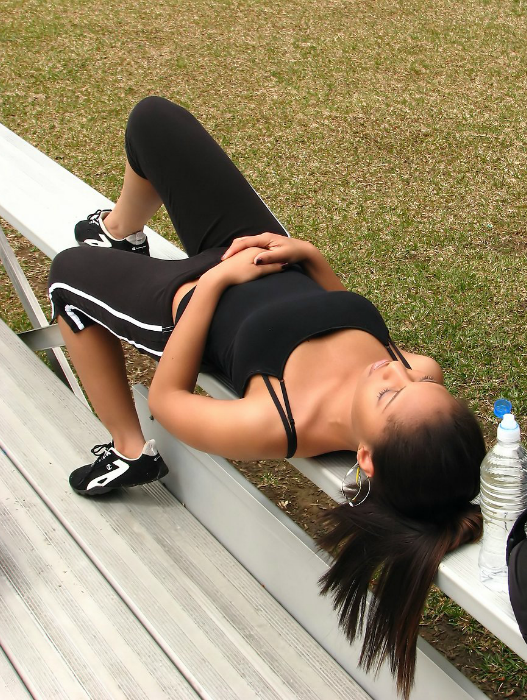
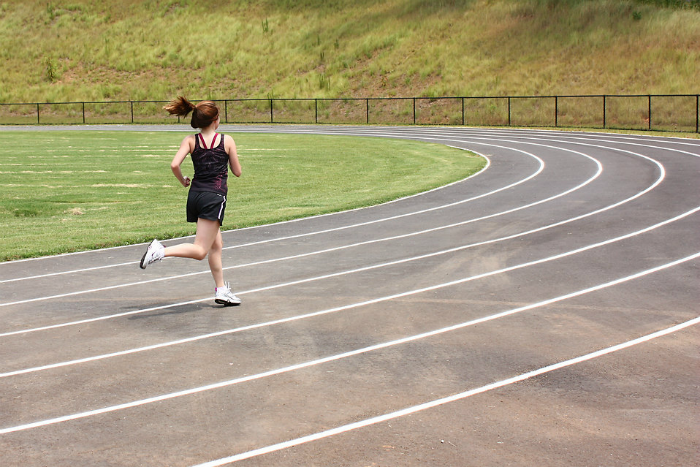
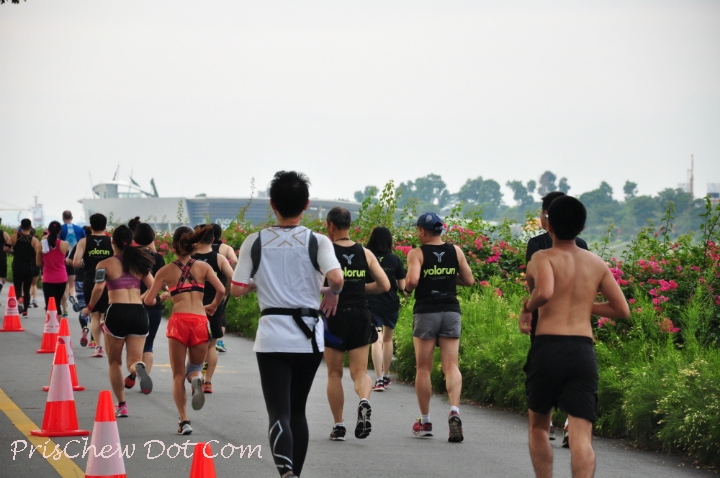
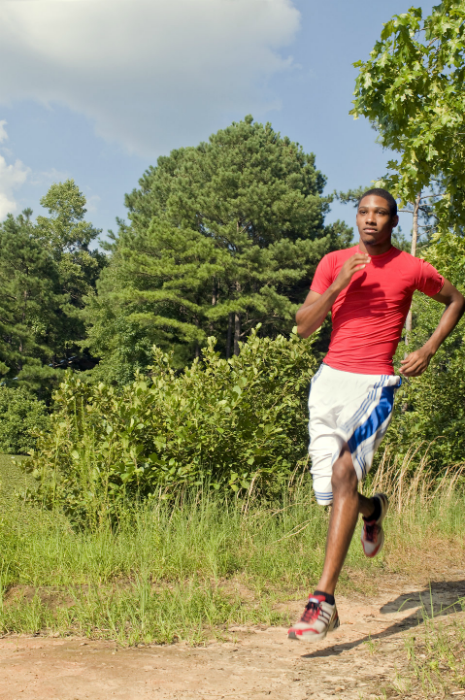
Thanks Steven for sharing this information. Cheers!!!